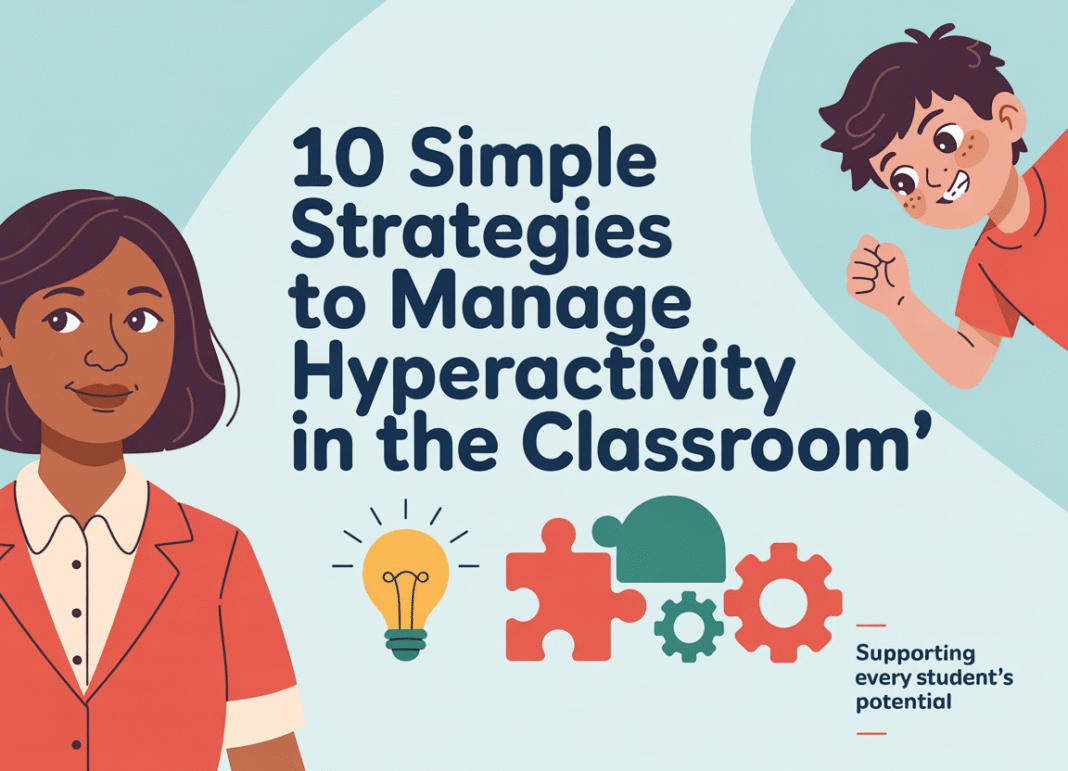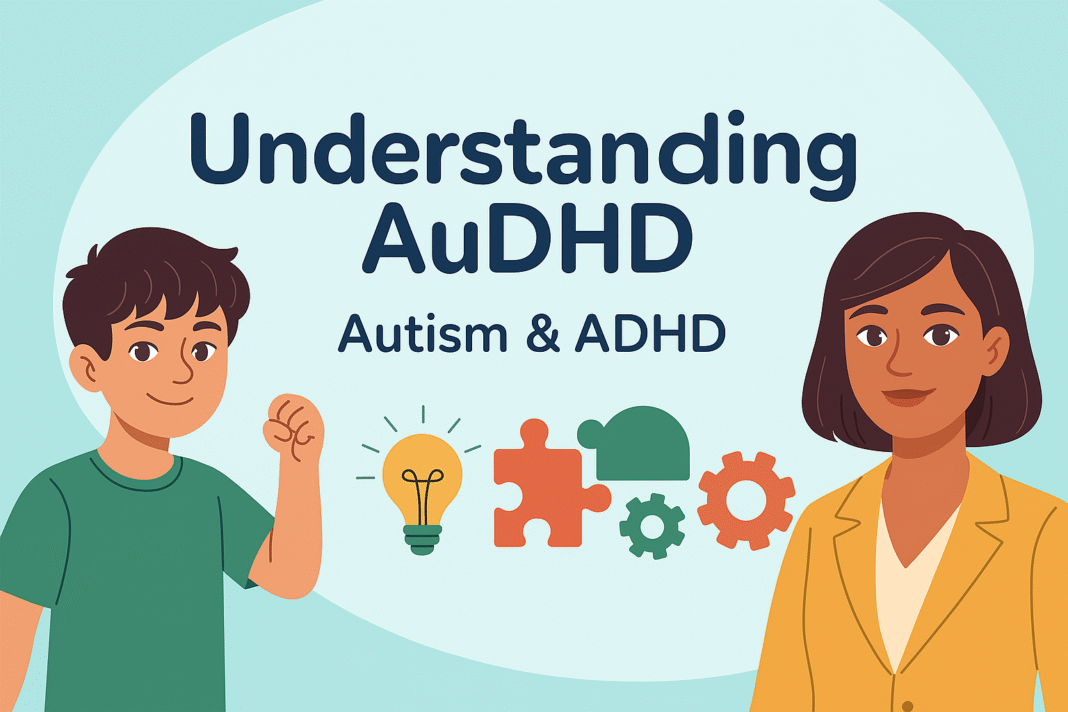Hyperactivity is one of the most common challenges teachers face in inclusive classrooms. According to the Centers for Disease Control and Prevention (CDC, 2023), more than 6 million children in the United States have been diagnosed with ADHD, and hyperactivity is a core symptom. While these students may struggle with constant movement, impulsivity, and difficulty staying focused, research shows that with the right support, they can thrive both academically and socially.
This guide explores 10 detailed, evidence-based strategies that teachers can use to manage hyperactivity, reduce classroom disruptions, and build supportive, inclusive learning environments. Each strategy is paired with recent findings from 2023–2025 to ensure practical, up-to-date relevance.
1. Establish Clear and Predictable Routines
Children with hyperactivity benefit from structure and predictability. According to DuPaul & Stoner (2014) and a 2025 teacher survey on effective classroom practices, consistent routines are among the top-rated methods for supporting students with ADHD.
| Practice | Example | Why It Works |
| Post a visual schedule | Use illustrated daily charts | Reduces uncertainty and impulsivity |
| Start with morning preview | Review the day’s activities with the class | Helps students mentally prepare and focus |
| Consistency across subjects | Same structure for math, reading, etc. | Increases security and reduces transitions stress |
Recent studies (2025, Taylor & Francis) confirm that teachers using visual and structured routines report higher levels of student engagement and lower behavior disruptions.
2. Provide Regular Movement Breaks
Movement is not a distraction — it’s a necessity. Research from Pontifex et al. (2013) and more recent physical activity studies (2022–2024) confirm that exercise boosts attention, executive function, and motor skills in students with ADHD.
| Type of Break | Duration | Classroom Example |
| Brain Break | 2–3 min | Stretching, jumping jacks, clapping games |
| Task-Oriented Break | 5 min | Delivering papers, cleaning the board |
| Sensory Break | Flexible | Using fidgets, calm corner, sensory walk |
Tip for Teachers: Build breaks into lesson plans rather than waiting for disruptions to happen. For example, after 15 minutes of focused work, allow a short “movement burst.”
3. Use Positive Reinforcement Instead of Punishment
Hyperactive students often hear more criticism than praise. Positive reinforcement shifts the focus to desired behaviors. A 2023 systematic review (PMC, 2023) found that only 32% of schools consistently apply behavioral reinforcement strategies — despite their proven effectiveness.
| Reinforcement Style | Example | Benefit |
| Verbal Praise | “I love how you’re staying in your seat!” | Builds self-esteem |
| Token Systems | Stickers, points, digital badges | Encourages long-term motivation |
| Group Incentives | Whole-class reward for collaboration | Promotes teamwork and peer support |
Key Insight: Rewards do not have to be material. Praise, recognition, and classroom privileges are often more motivating than prizes.
4. Create a Structured Physical Environment
The classroom setup itself can either support or hinder hyperactive students. The American Academy of Pediatrics (2019) emphasizes environmental design as a critical intervention for ADHD management.
| Classroom Element | Supportive Adjustment |
| Seating | Place student near teacher, away from distractions (windows, doors) |
| Classroom Layout | Declutter with organized shelves and bins |
| Regulation Space | A calm corner for self-regulation when overwhelmed |
Research Spotlight: A 2024 review in School Psychology International confirmed that structured classroom spaces correlate with fewer incidents of off-task behavior.
5. Break Down Tasks Into Manageable Steps
Large, multi-step tasks overwhelm hyperactive learners. Barkley (2015) and new reports (Talkspace, 2025) emphasize “chunking” as an effective approach.
| Method | Example |
| Step-by-step instruction | Give one short instruction at a time |
| Task Cards | Provide visual checklists |
| Frequent Check-ins | Monitor progress every 5–10 minutes |
Teacher Tip: Pair chunking with immediate feedback. Students with ADHD perform best when they receive recognition after each step, not just after the final outcome.
6. Incorporate Multi-Sensory Learning Approaches
Multi-sensory learning increases engagement and retention. A 2023 study in Frontiers in Psychology demonstrated that lessons combining visual, auditory, and kinesthetic elements significantly improved outcomes for ADHD students.
| Sensory Channel | Example Activity |
| Visual | Infographics, diagrams, flashcards |
| Auditory | Chants, read-aloud, discussions |
| Kinesthetic | Role-play, manipulatives, movement games |
Insight: Rotate between modalities every 10–15 minutes to maintain attention.
7. Teach Self-Regulation and Coping Skills
Self-regulation empowers students to manage impulses rather than relying on constant adult correction. Zylowska et al. (2008) and recent mindfulness-based interventions (2024 meta-analysis) highlight significant improvements in focus and emotional regulation.
| Strategy | Application in Class | Benefit |
| Breathing Exercises | “Smell the flower, blow the candle” | Immediate stress relief |
| Mindfulness Minute | 1–2 min guided meditation | Improves calmness and focus |
| Self-Monitoring Tools | Daily charts to track behavior | Builds independence and awareness |
New Finding (2024): Schools integrating short mindfulness practices reported a 20% decrease in classroom disruptions within 8 weeks.
8. Offer Flexible Seating Options
Not every child learns best sitting still at a desk. Flexible seating, from wobble stools to standing desks, supports natural movement needs.
| Seating Type | Benefit |
| Wobble Chair | Allows safe, controlled fidgeting |
| Standing Desk | Promotes posture and focus |
| Stability Ball | Engages muscles, channels energy |
Recent Evidence: A 2023 pilot study (Journal of Special Education Innovation) found flexible seating increased on-task behavior by 15% in inclusive classrooms.
9. Collaborate With Parents and Support Staff
Consistency across home and school is key. Research by DuPaul et al. (2011) and newer findings emphasize that collaborative intervention leads to higher success rates.
| Partner | Role in Student Support |
| Parents | Reinforce strategies at home |
| Special Educators | Adapt assignments and provide accommodations |
| School Counselors | Address social-emotional needs |
Insight: Regular communication (weekly check-ins, digital updates) ensures all adults stay aligned.
10. Model Patience, Empathy, and Understanding
Teacher behavior sets the tone. According to the American Psychological Association (2020), patient and empathetic approaches reduce escalation and improve teacher-student relationships.
| Teacher Action | Classroom Effect |
| Calm correction | Reduces escalation |
| Positive framing | Maintains dignity and respect |
| Flexible response | Encourages effort, not perfection |
Reminder: Hyperactivity is not intentional disobedience. When students feel valued and understood, they are more likely to stay engaged.
Final Thoughts
Managing hyperactivity in the classroom requires a shift in mindset: from control to support. Evidence from 2023–2025 confirms that combining structured routines, movement breaks, reinforcement, self-regulation, and collaboration builds inclusive classrooms where every student can succeed.
Teachers are not alone in this — parents, specialists, and the students themselves all play a role. With patience and the right tools, hyperactivity can be transformed into engagement and creativity.
Recent References
- CDC (2023). ADHD Data and Statistics.
- DuPaul, G. J., & Stoner, G. (2014). ADHD in the Schools: Assessment and Intervention Strategies. Guilford Press.
- Kazdin, A. E. (2017). Behavior Modification in Applied Settings. Waveland Press.
- Pontifex, M. B., et al. (2013). Exercise improves attention in children with ADHD. Journal of Pediatrics.
- Zylowska, L., et al. (2008). Mindfulness meditation in adolescents with ADHD. Journal of Attention Disorders.
- Taylor & Francis (2025). Teachers’ perspectives on effective ADHD classroom strategies.
- Frontiers in Psychology (2023). Multisensory instruction and ADHD learning outcomes.
- Journal of Special Education Innovation (2023). Flexible seating pilot study in inclusive classrooms.
- Talkspace (2025). ADHD classroom interventions and teacher support.




